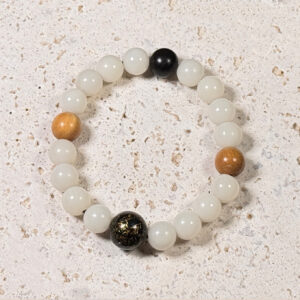
The Art and Elegance of Lacquer: A Timeless Craft
Lacquer has been cherished for centuries as a luxurious and durable finish that enhances the beauty of various objects. This versatile material is not only valued for its stunning aesthetics but also for its protective qualities. In this article, we explore the origins, characteristics, cultural significance, and applications of lacquer, ensuring that you gain a comprehensive understanding of this exquisite craft.
What is Lacquer?
Lacquer is a natural resin that, when applied, creates a glossy, hard finish. It is commonly derived from the sap of lacquer trees (Toxicodendron vernicifluum) native to East Asia. The resulting product is prized for its durability, water resistance, and vibrant color.
Etymology
The term “lacquer” has roots in the Latin word “lac,” which refers to a resinous substance. Its rich history dates back thousands of years, underscoring its enduring appeal in the world of art and craftsmanship.
Origins and Characteristics
Lacquer is traditionally associated with Asian cultures, particularly in countries like China, Japan, and Korea. Here are some key characteristics that make lacquer extraordinary:
- Durability: Once cured, lacquer forms a tough, resilient surface that withstands wear and tear.
- Aesthetic Variety: Available in a wide range of colors and finishes, from high gloss to matte.
- Depth and Richness: Layers of lacquer can be built up to create a striking depth that enhances the underlying material.
Cultural Significance
Historically, lacquerware has been a symbol of status and craftsmanship throughout Asia. In many cultures, lacquered items are used in ceremonial contexts and are considered invaluable heirlooms. Some notable cultural references include:
- Chinese Lacquerware: Known for intricate designs and inlays, often depicting nature and mythology.
- Japanese Urushi: Highly regarded for its superior quality and method of multi-layer application, which can take years to perfect.
Applications of Lacquer
Lacquer can be applied to various materials, including wood, metal, and ceramics. Its primary applications include:
- Furniture: Lacquered furniture pieces are known for their elegance and durability.
- Decorative Arts: Used in fine arts to create intricate designs on boxes, trays, and utensils.
- Fashion: Lacquer finishes are popular in jewelry, handbags, and shoes, adding a modern touch to classic designs.
Metaphysical and Healing Properties
In some cultures, lacquer is also thought to possess protective qualities. It is believed to ward off negative energies and promote a sense of well-being. Individuals often utilize lacquered objects in spiritual practices to enhance their environments.
Care and Maintenance
To maintain lacquered items, proper care is vital:
- Cleaning: Use a soft, damp cloth to gently wipe the surface. Avoid harsh chemicals that can damage the finish.
- Storage: Keep lacquered objects in a cool, dry place away from direct sunlight to prevent fading or discoloration.
Sustainability and Modern Trends
As sustainability becomes increasingly important, many artisans are exploring eco-friendly alternatives to traditional lacquer. Natural, plant-based lacquers are gaining popularity, appealing to environmentally conscious consumers without compromising quality or beauty.
Lacquer is more than just a finishing material; it is a storied craft that embodies artistry, durability, and cultural significance. Whether used in fine furniture, decorative arts, or fashion, lacquer continues to enchant and inspire. By understanding and appreciating the beauty of lacquer, you can elevate your personal style and your living spaces with timeless elegance.
Sandalwood Bodhi Lacquer Beaded Bracelet
$48.99 – $52.99Price range: $48.99 through $52.99 Select options This product has multiple variants. The options may be chosen on the product page

